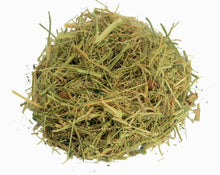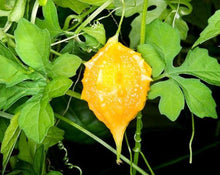Bitter Mellon home remedy to regulate blood sugar level
Bitter Mellon - Momordica charantia L.
Origin: Brazil
Used part: Stem, Leaf
Description:
Despite having a popular name, bitter melon is little known. The plant originates demarcated in the south of China and east of India and has as scientific name momordica charantia, being of the family of Cucurbitaceae. This plant grows in tropical areas, integrating parts of the Amazon, East Africa, Asia and the Caribbean, but is cultivated throughout South America. The bitter melon has a green color when it is still young, but when it ripens acquires an orange color. The leaves of the plant are membranous and silky.
The momordica charantia has several names in Portuguese can be called melon-de-Saint-Caetano, herb-de-Saint-Caetano, melãozinho, fruit-black. In Spanish it is known for balsamina, pomme de merveille in French and papailla, balsam pear and bitter melon are the possible names of the plant in English.
Indigenous peoples have known the properties of this plant for many years, so it is not today that its benefits are used to treat humans. To achieve the desired results, Indians used and still use bitter melon tea. According to the tribes, this herb is effective in fighting diabetes, expelling intestinal gas, promoting a balance in menstruation. In addition to acting as anti-viral, protecting the body against measles, hepatitis and fever.
Taking as an example the role of plants in indigenous communities, it has been introduced in the treatment of problems that also affect the urban population, such as tumors, rheumatism, malaria, vaginal discharge, inflammation, menstrual problems, colic, worms and parasites. In addition to being used topically in lesions, wounds and infections.
Health benefits:
The caetano melon plant has its indicated use in the treatment of inflammation of the liver, joint pain, diabetes, eczema, abdominal cramps, inflammatory edema, skin problems, pharyngitis, burns with purulent leucorrhias, flu, boils, hemorrhoids, intermittent fevers, cough, yellow phlegm, vaginal irritation, menstruation and PMS, insect bites, ulcers, earaches and rheumatic pains.
Its benefits are possible due to its properties that involve its action as purgative, vermifuge, antiparasitic, antileucorreic, bactericidal, hypoglycemic, antileukemic, anticancer, antitumor, anti-inflammatory, aphrodisiac, antimycotic, healing, blood purifying, astringent, antirheumatic and antiviral.
Good Herbal Remedy:
- Regulates blood sugar levels
- Helps in the treatment of skin problems, wounds, skin lesions and eczema
- Relieves insect bites
- Helps in the treatment of constipation
Directions:
- Put 2 tablespoons of herb to a liter of water
- Turn off when the water reaches boiling
- Cover and leave the solution muffled for about 10 minutes
- Strain and drinking
How to Drink:
Take 2 to 3 cups a day.
Contraindications:
Consumption is not indicated for pregnant or lactating patients, in addition to children. It is still contraindicated for those who want to have children, diabetics and patients with chronic diarrhea. Warning, seeds have toxic compounds and therefore should not be consumed in large quantities. It can cause drastic drop in blood glucose, miscarriage and may have teratogenic action. When in excess, it can cause vomiting and diarrhea and, according to some sources, only half a spoonful of ripe fruit juice can cause the death of a large calf in less than a day. It should not be consumed in conjunction with chlorpropamide, antidiabetic drugs and cholesterol-lowering drugs, since it potentiates their effects.




